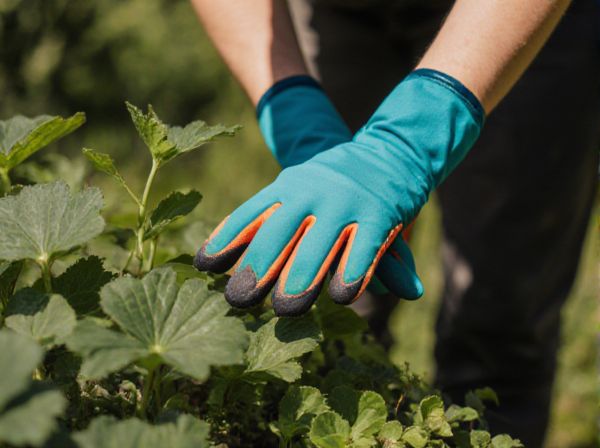
Windbreak vs Shelterbelt Illustration
Windbreaks consist of a single row of trees or shrubs designed to reduce wind speed and protect crops, soil, and livestock from harsh winds. Shelterbelts are multiple rows of vegetation that create a more substantial barrier, enhancing microclimate conditions and improving biodiversity. Both methods play a crucial role in mitigating soil erosion, conserving moisture, and supporting sustainable agricultural practices.
Table of Comparison
| Feature | Windbreak | Shelterbelt |
|---|---|---|
| Definition | Single or few rows of trees/shrubs designed to reduce wind speed. | Multiple rows of trees/shrubs providing comprehensive wind protection and microclimate improvement. |
| Primary Purpose | Reduce wind speed to protect soil and crops. | Shield larger areas, improve microclimate, and enhance biodiversity. |
| Typical Width | 1-3 tree rows (5-15 meters). | 3 or more tree rows (15+ meters). |
| Climate Impact | Limits wind erosion and moisture loss locally. | Modifies local climate by affecting temperature, humidity, and air flow. |
| Biodiversity | Supports limited wildlife habitat. | Provides habitat for diverse plant and animal species. |
| Examples | Farmland perimeter wind reduction. | Large-scale agroforestry and soil conservation. |
Introduction to Windbreaks and Shelterbelts
Windbreaks and shelterbelts are strategic planting designs aimed at reducing wind speed and protecting soil from erosion in agricultural and environmental settings. Windbreaks typically consist of a single row of trees or shrubs that act as a barrier against prevailing winds, while shelterbelts are multiple rows designed for enhanced wind reduction and microclimate improvement. Both play critical roles in climate adaptation by conserving moisture, reducing crop damage, and improving overall ecosystem resilience.
Defining Windbreaks: Features and Functions
Windbreaks are linear barriers composed of trees or shrubs designed primarily to reduce wind speed and protect soil from erosion. Their dense planting arrangement helps conserve moisture, improve microclimates for crops, and shield livestock from harsh winds. Unlike broader shelterbelts, windbreaks focus on enhancing agricultural productivity by mitigating wind damage and controlling snow drift.
What is a Shelterbelt? Key Characteristics
A shelterbelt is a strategically planted row or group of trees designed to protect agricultural land and reduce wind erosion by acting as a barrier against prevailing winds. These dense, multi-species plantings vary in width and height, typically composed of several tree and shrub layers to optimize wind reduction and microclimate improvement. Shelterbelts also enhance biodiversity, improve soil moisture retention, and contribute to carbon sequestration in climate adaptation strategies.
Windbreak vs Shelterbelt: Main Differences
Windbreaks are rows of trees or shrubs planted to reduce wind speed and protect soil erosion, while shelterbelts are broader and often consist of multiple rows of vegetation designed to provide more extensive protection for crops, livestock, and buildings. Windbreaks typically focus on optimizing wind reduction with denser planting, whereas shelterbelts aim to create a microclimate by modifying temperature, moisture, and wind flow. Both serve critical roles in improving agricultural productivity and mitigating climate impacts but differ mainly in scale, design, and multifunctionality.
Benefits of Windbreaks in Garden Climates
Windbreaks in garden climates improve microclimates by reducing wind speed, which minimizes soil erosion and moisture loss. They create a protective barrier for plants, enhancing growth and increasing crop yields by maintaining more stable temperature and humidity levels. Strategic placement of windbreaks also helps conserve energy by lowering heating needs in cooler seasons.
Shelterbelts for Sustainable Landscaping
Shelterbelts, composed of multiple rows of trees and shrubs, create microclimates that reduce wind erosion, conserve soil moisture, and enhance biodiversity in sustainable landscaping. Unlike single-row windbreaks, shelterbelts provide improved protection for crops and habitats by reducing wind speed over larger areas and stabilizing local climates. Integrating shelterbelts into landscape design optimizes carbon sequestration and supports long-term ecosystem resilience.
Plant Selection for Windbreaks and Shelterbelts
Plant selection for windbreaks emphasizes fast-growing, dense species such as conifers and tall grasses that effectively reduce wind speed and protect soil from erosion. Shelterbelts incorporate a mix of tree and shrub species, including deciduous and evergreen varieties, to provide year-round wind protection while supporting biodiversity. Choosing native, drought-tolerant plants enhances survival rates, improves microclimate regulation, and maximizes the ecological benefits of both windbreaks and shelterbelts.
Design Considerations in Windbreaks vs Shelterbelts
Windbreak design focuses on maximizing wind speed reduction and protecting crops by using a single or double row of dense, tall trees or shrubs. Shelterbelts incorporate multiple rows of varied species arranged to optimize microclimate benefits, such as minimizing soil erosion, controlling snow drift, and enhancing biodiversity. Effective design of shelterbelts considers species diversity, row spacing, and height gradients to provide long-term protection across different seasons and climatic conditions.
Maintenance Tips for Effective Protection
Regular pruning and removal of dead branches maintain the structural integrity of windbreaks and shelterbelts, enhancing their ability to reduce wind speed and protect soil from erosion. Selecting native, drought-resistant species reduces water requirements and boosts long-term resilience in varying climate conditions. Monitoring pests and diseases early prevents damage and ensures sustained effectiveness in climate protection zones.
Choosing Between Windbreaks and Shelterbelts for Your Garden
Choosing between windbreaks and shelterbelts depends on your garden's size and specific needs. Windbreaks typically consist of a single row of trees or shrubs designed to reduce wind speed and protect plants from desiccation. Shelterbelts, on the other hand, involve multiple rows of vegetation that offer enhanced protection by creating microclimates, improving soil moisture retention, and reducing erosion more effectively.
Windbreak vs Shelterbelt Infographic

 gardendif.com
gardendif.com